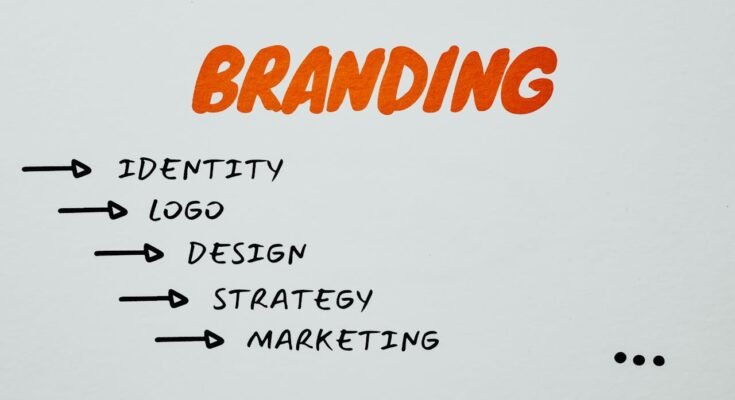that still prevail in today’s digital landscape
Very few things in the world of business will remain unchanged, and marketing will remains one unchangeable foundation for success. Consumer behaviors are changing at lightning speed in the digital age, so ingrained are the processes of digital marketing. This article goes deeper into some of the best and current marketing strategies which should be thought of in drawing attention, trust-building, and increasing conversions.
1. Personalization: The Key to Connection
With a barrage of advertisements being pumped into consumers’ minds today, the pressure to shine out is greater today than ever before, and getting there will involve virtual marketing. One of the most important tools that can be used for this is personalized marketing, which involves targeting content and messaging based on individual preferences. Data and insights allow companies to craft a marketing campaign that is directly connected with the needs and wants of their audience.
Why this works: Consumers feel appreciated as long as the content speaks to their personal interests. Personalization will drive greater engagement and conversion rates, with even deeper connections established with the brand. For example, email campaigns with personalized product recommendations or targeted social media ads have often seen higher click-through rates than generic outreach efforts.
How to get started: From customer interactions through your site, social media, or past purchases, leverage available customer data. Take it a step further by investing in customer relationship management systems to help track and analyze behavior patterns. The information it provides will help you to segment your audience and craft the right message to the right group at the right time.
2. Content Marketing: Building the trust and authority
Content marketing still stands strong amongst the top long-term traffic-driving and authority-establishing strategies in your niche. With valuable and informative answers to your audience’s questions, you offer them enough reason to trust your brand as an expert since that develops trust over time.
What makes it work: When potential customers search for information, they usually go to the internet for some solutions. Be it blog posts, how-to videos, or podcasts, content that addresses their pain points establishes credibility. Apart from this, well-executed content marketing works for good SEO(Search Engine Optimization), allowing your business to rank higher in search results and increase organic traffic.
How to Implement: Define the salient questions or problems faced by your audience. Build educational content around those problems that would be both informative and actionable. Ensure that this content is consistent and share-able from wherever on your platform, be it your website or social media so that you can reach the broadest audience possible.
3. Social Media Marketing: Engaging with Your Audience
Social media isn’t simple a place for entertainment. Its value as a marketer wielding information increases with few billion active stance on major social platforms like Facebook, Instagram, TikTok, and LinkedIn. The marketer meets, affects, charms, and engages with the potential customer where many people spend their time doing other things.
Why it works: social media means that people from businesses now actually speak to a greater part of the public, much more informally and thus earnestly. From answering customer queries to providing behind-the-scenes peeks at your company culture, social media helps humanize your brand, thereby making space for effortless relationships.
How to implement: Have a social media plan in place that captures business goals and aims. Be consistent with your posts, and engage followers through comments and messages. Though friendly, also try your hand at other facets of content-a mix of video, pictures, polls and more. Social media ads can also be paid for, to promote visibility to new customers.
4. Influencer Marketing: Using Influencers’ Trust and Reach
Influencer marketing is one of the most candidly success stories that brands have researched in their advertisement-spilling invitations toward the vast followers of influencers. They are big-name persons with lots of credibility and legit check in their area of expertise; and businesses pragmatically gain exposure in a broad publication among relevant fields.
Why it works: Consumers trust recommendations from people they follow and look up to, much more than they do advertisements of products or services. For the same reason, they find them very much authentic and relatable. An audience would think all very much on board and take action after they get anything from an influencer’s mouth.
How to implement: Research who the influencers are with values compatible with your brand and whose audiences you well want to go after. Set some natural, organic content together-product reviews, unboxing videos, or sponsor posts. Aim to make the partnership authentic rather than straightforwardly transactional for maximum impact.
5. Email Marketing: Fostering Relationships and Driving Conversions
Email marketing has proved to be a consistent and substantial revenue earner for businesses. Newsletters, promotional material, or product updates are just a few of the channels employed to ensure continued engagement with customers and prospects via email marketing.
Why it Works: Email gives a more personal line to your target audience. Backed with segmentation, personalization, and automation, email campaigns are highly targeted and give timely and relevant information to your audience. Well-crafted email marketing campaigns can be highly effective at increasing retention, boosting repeat purchases, and building brand loyalty.
How to implement: The first step is to build an email list of people who can opt-in to receive messages. Segment your list according to demographics, behaviors, or previous actions, and send tailored content to each segment. Include clear calls-to-action (CTAs) to prompt conversions, including purchasing a product or reading a blog post.
6. Paid Advertising: Reaching Your Ideal Customer
While organic marketing strategies drive long-term growth, paid advertising can deliver immediate results. Google Ads, Facebook Ads, and other paid platforms allow businesses to target their ideal customers with precision, ensuring that their ads are seen by people who are most likely to convert.
Why it works: Paid ads allow you to scale quickly and to control your marketing with precision. You can drill down on specific areas of targeting with advanced audience features according to demographics, interests, behaviors, or even brand interactions in the past.
How to Implement: Your first steps are to identify your objectives and initial budget for paid advertising campaigns. Begin small to identify what messages, targeting, and creative elements perform best. Then start A/B testing to refine which measure performed best and keep what you’ve learned. Track your metrics-first click-through rate (CTR) and conversion rate-to gauge how successful your ad campaigns are.
Conclusion
Be it personalizing content, getting social, or empowering your audience through influencer support, the greatest lesson to learn about successful marketing today is to remain adaptive and find out what works best for your target audience. By blending the strategies noted above, businesses may find themselves on the path toward long-term growth and healthy customer relationships.
It boils down to a pretty clear goal: provide value, build relationships, and craft a brand that stands out within the overstuffed digital marketplace.



